Writer and broadcaster Gillian Darley visits our archive to explore the story of this coastal Saxon church...
For most of the last two or three years I have been immersed in Essex, if not physically, then on the page. The most recent topic brought me, with great pleasure, back to SPAB HQ to consult a slim brown folder brought upstairs through the empty building from the archives to the committee room. Apart from the heady excitement of being somewhere familiar IRL – as opposed to online – for the first time in many months, the sensation of opening up old files and sniffing out truffles on the page never leaves me. Even if my quarry on this occasion lay in the 1950s, that fusty decade which I am old enough to remember faintly, the combination of notes, letters with headed paper from important institutions, leaflets and clippings offered an immediately promising paper trail.
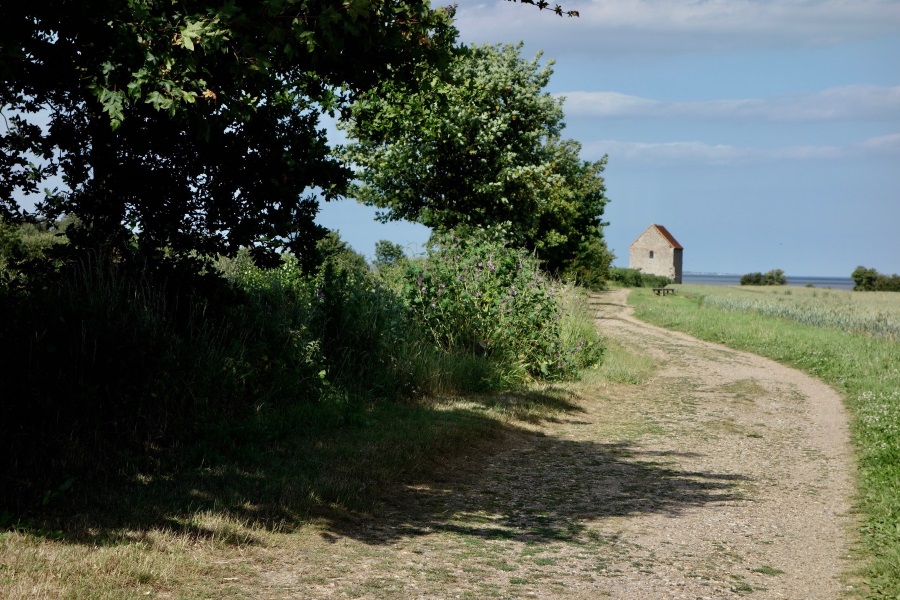
The file in question was devoted to St. Peter (on the Wall), Bradwell on Sea. My interest, on this occasion, lay in how the unlisted, decrepit, little fragment of St Cedd’s 7th century foundation was being treated in the face of a monstrous new development proposed on the northern tip of the Dengie Peninsula, a new Magnox nuclear power station. The answer was that it passed with very little comment – another brown folder, marked NUCLEAR, was only notable for being very thin. Mrs Dance, SPAB Secretary at the time, was far more worried about the other Magnox site, Berkeley (on the Severn estuary) because of its proximity to the castle. However, Berkeley didn’t prompt a public inquiry but Bradwell did, partly due to the protests orchestrated by Tom Driberg, until the previous year (1955) Labour MP for Maldon. A five day long (!) process, held in Bradwell Village Hall and then the Congregational Chapel in Maldon was little taken with planning issues (it was, anyway, held at the behest of the Ministry of Fuel and Power) but did worry about ‘nuclear oysters’ and the navigability of the Blackwater estuary.
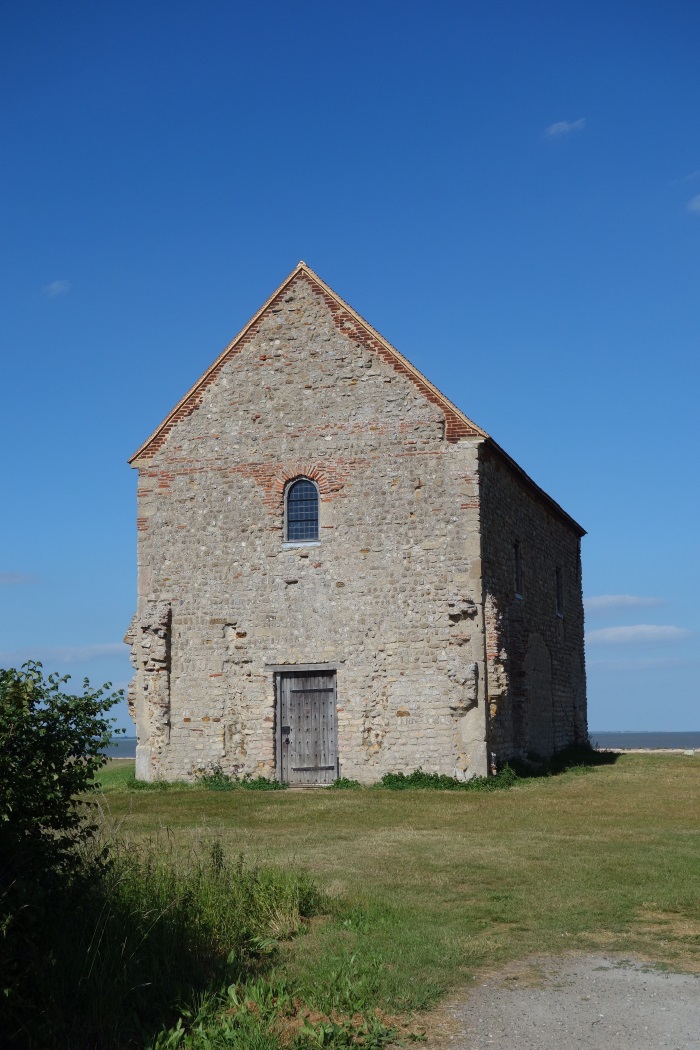
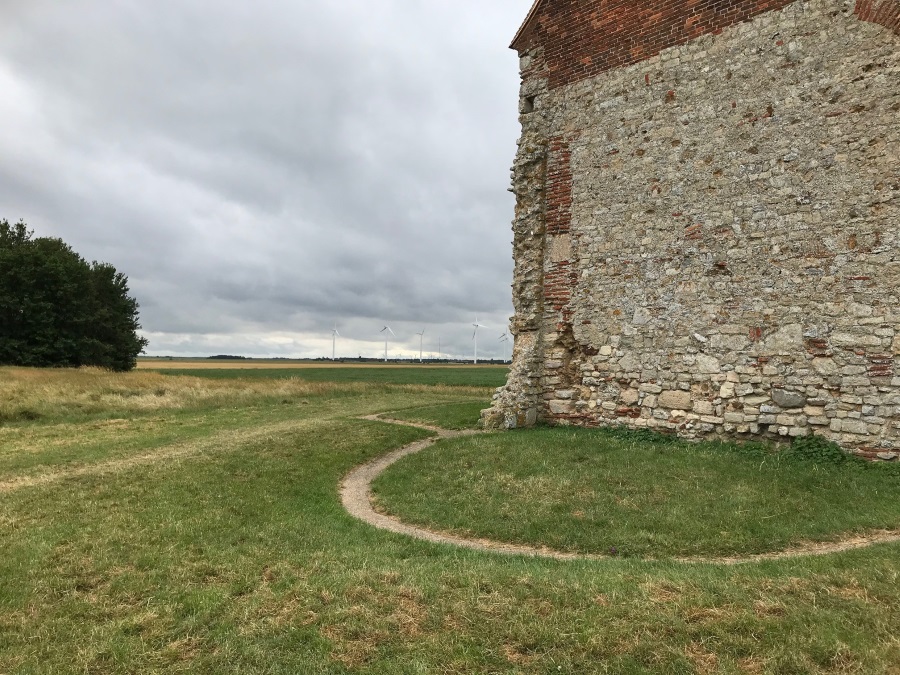
Traces of the original apse are visible (right).
The plight of St. Peter’s was, understandably given its condition and lack of statutory protection, overshadowed by concerns about the loss of the intangible qualities of this landscape, so remote, atmospheric and vulnerable. The CPRE (Council for the Protection of Rural England) sent their Assistant Secretary, Mervyn Osmond to argue for both (until then SPAB had had an architect representative on their committee, but in 1956-7 the seat was vacant). There were two eloquent independent voices alongside him, Driberg and his old friend from Oxford days and SPAB stalwart, John Betjeman. Driberg lived in Bradwell Lodge and was a persuasive campaigner. But the power station opened in the early 1960s. Now Bradwell B, of entirely different scale, technology and provenance looms. Hence my research.
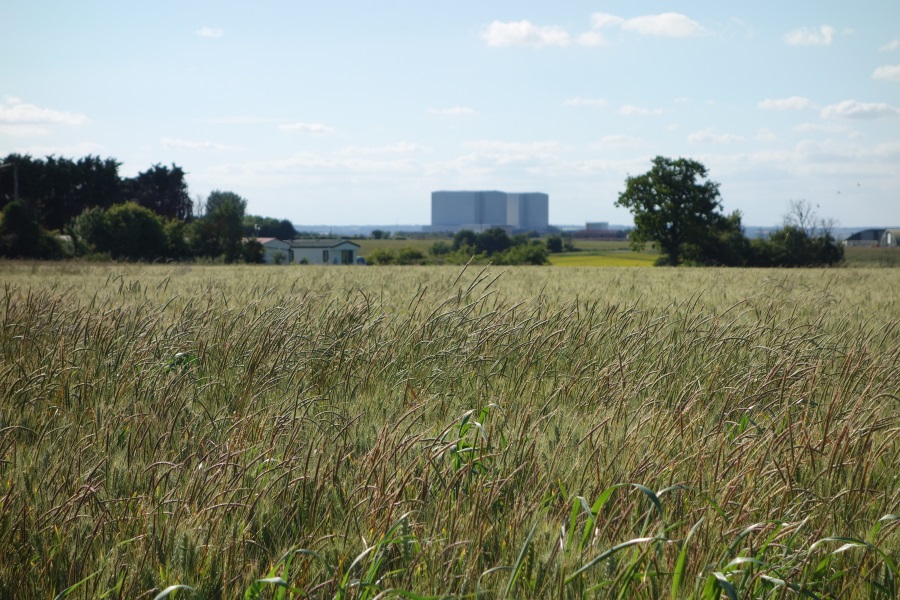
Bradwell A nuclear power station in the distance
My examination of the St Peter’s file revealed a stalwart trail of SPAB supporters, reporting on the bad condition of the little church, recently brought back to Christian use after being used as a barn for many decades. The SPAB had locked horns with the diocesan surveyor, Laurence King, who, encouraged by the Bishop of Chelmsford, dreamed of a Saxon conjectural restoration. Fundraising continued apace but so, too, did impassioned protests from the CBA (Council for British Archaeology) and others. In 1959, the church was listed Grade I. It was saved from the ambitions of bishop and architect, the latter referring to it, negatively, as ‘barnlike’.
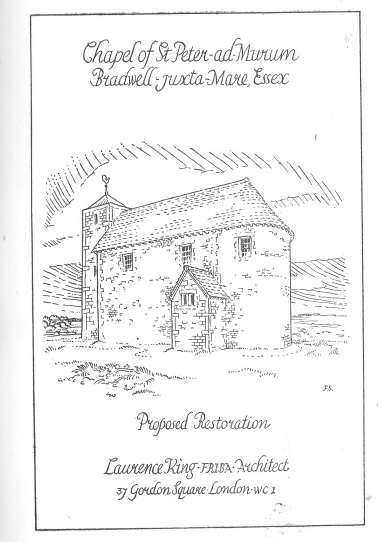
The proposed restoration to by Laurence King, SPAB archive
Of course, in that very simplicity lies its beauty. Like an early Christian church in Rome, it was constructed with a potpourri of materials, some from the Roman fort, Othona, which it replaced. As it stands, unadulterated, it’s a triumph for SPAB activism. And the slim brown file in the archive tells a little of the story. Meanwhile, my essay will be part of a larger whole, a book edited by Dr Johanna Dale, titled St. Peter-on-the-Wall: Heritage and Landscape on the North Sea Coast (coming from UCL Press in 2022) which will help fight the little church’s corner all over again.
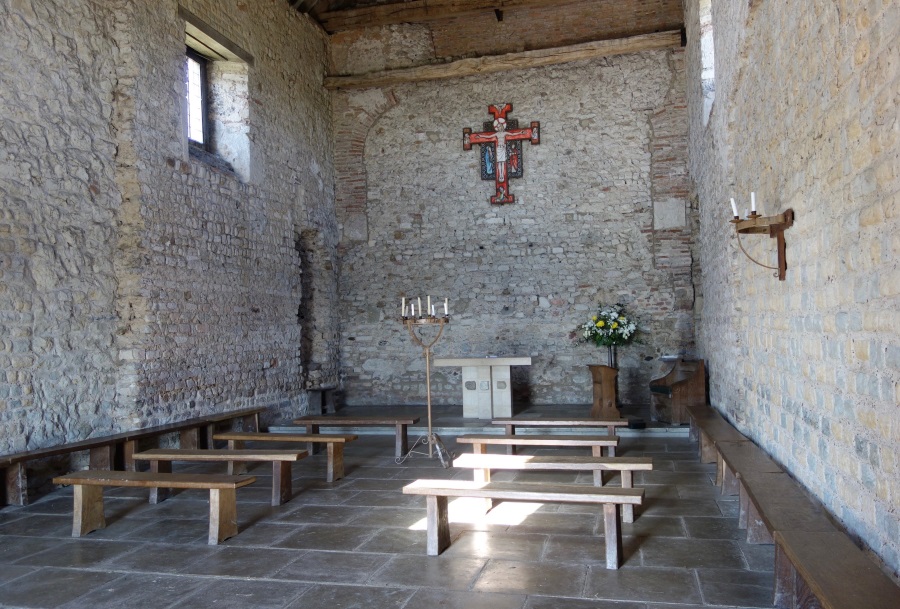
Gillian Darley’s Excellent Essex will be published in paperback on 6 April. Her contribution to the series, Odes to Essex, ‘The Essex Way’ will be broadcast on 29 January at 10.45pm on BBC R3.
All photos by Gillian; the drawings by Laurence King are from the SPAB archive.
